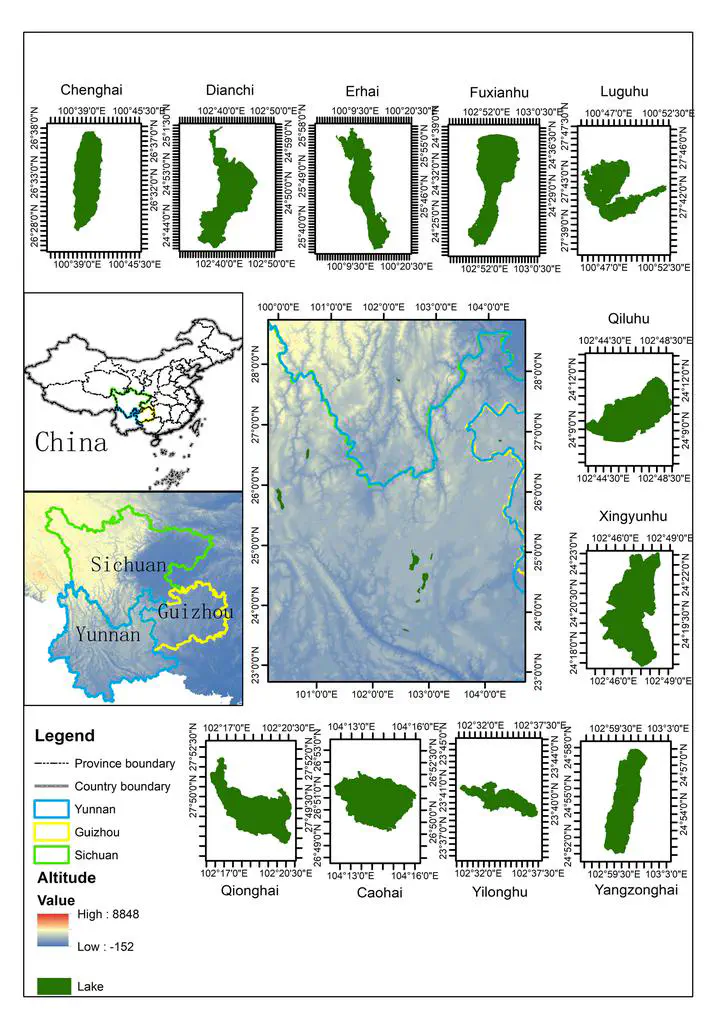Prediction of surface water temperature and its spatial-temporal variation characteristics of 11 main lakes in Yunnan-Guizhou Plateau
 featured.jpg
featured.jpg
Abstract
In the context of global warming, the Lake Surface Water Temperature (LSWT) exhibits a general upward trend. As an indicator of climate change, the surface water temperature of plateau lakes is particularly sensitive to climate warming. In this study, the machine learning model and physical process model are combined to predict water temperature in lake systems: The Air2water model and the Long Short Term Memory (LSTM) model are combined to form a prediction model for the inversion and prediction of 11 typical plateau lakes in the Yunnan-Guizhou Plateau. The modeling results show that the Air2water model performs best, followed by the LSTM model. Overall, the Air2water model and the LSTM model effectively reproduce the monthly, seasonal, and interannual variations of LSWT dynamics in the 11 lakes. The research results show that the LSWT data set from 2021 to 2025 is constructed based on the forecast result, and it is found that six lakes, including Caohai, Dianchi, Erhai, Qionghai, Xingyun Lake and Yangzonghai, showed significant warming in the next five years (the maximum warming rate was less than +0.2 ∘ C/year), while the remaining five lakes showed no significant changes, and the size classification of LSWT data in different spaces on the interannual scale was consistent with the classification of altitudes. By conducting extensive exploration and research on the inversion of LSWT using physical process models and machine learning models, this study offers novel solutions for LSWT prediction and inversion. The study also provides a solid theoretical and practical foundation for future LSWT research, thereby holding practical significance and research value.